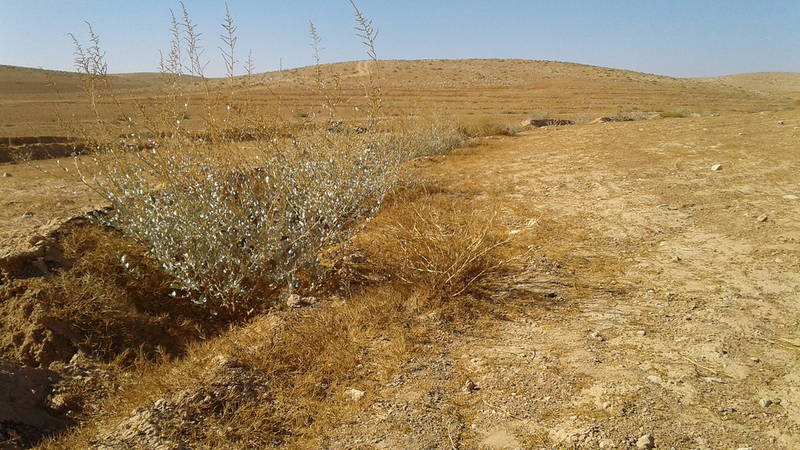Producing ‘more with less’ across the dry areas

The dry areas of the developing world face extreme levels of land degradation and water scarcity, and climate change is making an already desperate situation worse. Some of the challenges farmers are increasingly forced to contend with include less rainfall and more erratic distribution, depleted groundwater resources, salinization, and wind and water erosion.
An indication of the scale of these challenges is provided by the Economics of Land Degradation Initiative, which calculated that some 10 to 20 percent of usable land in the dry areas is currently degraded. The United Nations Convention to Combat Desertification (UNCCD) offers an equally worrying assessment: it estimates that droughts and desertification cause a loss of 12 million hectares (ha) of productive land each year.
In many dryland countries the availability of renewable water resources is reaching critical levels. In most countries located in the Middle East and North Africa (MENA) region, for instance, availability remains below 1000 m3 per capita per year [1] . Withdrawal-to-availability ratios also exceed a critical threshold of 40 percent in all MENA countries except Lebanon, and in Jordan, Yemen, Libya and most Arab peninsula countries they now exceed 100 percent[2].
Innovative and integrated solutions
In response to these challenges ICARDA has developed innovative solutions to enhance agricultural productivity, helping farmers to produce ‘more with less’ – on fields, across rangelands, and in greenhouses. Our integrated approaches manage soil, land, and water resources through linkages with the rangeland, livestock, and value chain expertise embedded in the Center.
Over the past four decades ICARDA has been a champion of conservation agriculture; spearheaded a major initiative to combat Iraq’s soil salinity challenges; promoted more efficient irrigation systems; and helped rural communities to construct and maintain simple and practical water-harvesting structures. Millions of farmers and their dependents have benefited from the Center’s research activities since 1977.
On-going approaches to sustainable water and land management include efforts to maximize in-situ water storage in rainfed agriculture and rangelands; the safe use of treated wastewater; developing effective indicators to measure soil fertility and health; and restoring degraded agro-pastoral systems through landscape modification.
A modern approach to rainwater harvesting
Encouraging communities to abandon old practices and improving poorly-designed infrastructure is helping to modernize approaches to rainwater harvesting - a practical and cost-effective solution to increasingly erratic precipitation. Given that the technical aspects of water harvesting are often complex – yet invariably implemented by unskilled labor – ICARDA scientists have developed an inexpensive mechanized laser-guiding system that more effectively identifies contours and aids the construction of micro-catchments.
In combination with sustainable grazing strategies and the introduction of appropriate shrubs, this modern approach has doubled yields among participating farmers across a 2800 hectare stretch of Jordan’s arid ‘badia’ region. Yields of important rangeland shrubs were also up to 1.6 times higher, and the approach recharged soil profile ground water and halted soil and wind erosion.
Raised-bed cultivation
In the Nile Delta, the Center has adapted and mechanized the practice of raised-bed planting for poor farmers on fragmented lands. The approach modifies flood irrigation and adjusts seed drills to formulate beds and sow different crops at the same time with adjustable seed rates. Analysis suggests its adoption can lead to a 25 percent increase in productivity and a 50 percent reduction in the costs of seed.
Now part of a national wheat campaign, Egypt plans to apply raised bed wheat production across an estimated 800,000 ha by 2023. Over a 15-year horizon this move is expected to generate economic benefits exceeding $4 billion, most accruing to more than one million wheat producers.
Conservation agriculture
ICARDA efforts to promote the adoption of Conservation Agriculture (CA) – the practice of not plowing farmlands and leaving crop residue in the field for improved soil fertility and water conservation – has helped to bring optimal production at the best cost in both Iraq and Syria. In Syria, a study of 621 wheat farmers revealed that the adoption of conservation agriculture had resulted in a 33 percent increase in net crop income and a 34 percent gain in per capita wheat consumption per year.
In Iraq, too, benefits have been positive. Farmers adopting CA have experienced enhanced water-use efficiency, more crop production, and reduced costs. An extension program saw the land devoted to CA-sown wheat increase from 0 ha in 2007 to 15,000 ha in 2015. This success subsequently convinced researchers to extend the practice to farmers in Central Asia and North Africa.
[1] Selvaraju, R. 2013. “Implications of climate change for agriculture and food security in the Western Asia and Northern Africa region.” In Climate change and food security in West Asia and North Africa, edited by M. V. K. Sivakumar, R. Lal, R. Selvaraju, and I. Hamdan. Dordrecht: Springer.
[2] Food and Agriculture Organisation (FAO). 2013. Aquastat online database. http://www.fao.org/nr/water/aquastat/data/query/index.html?lang=en
